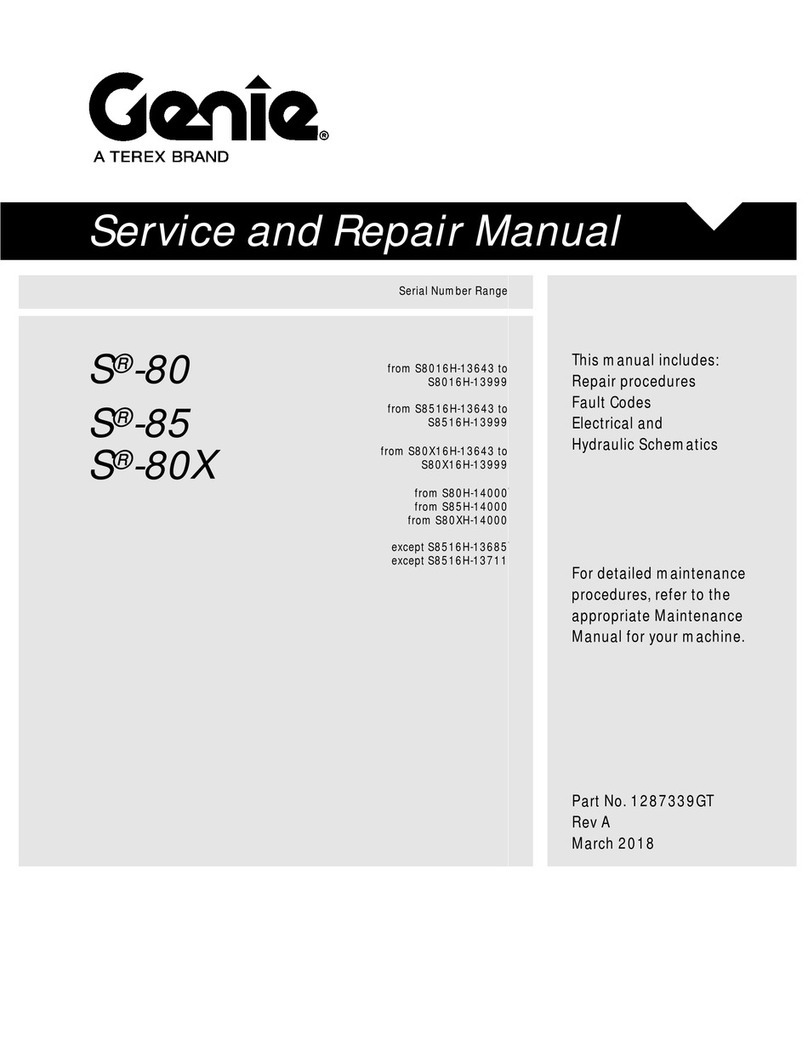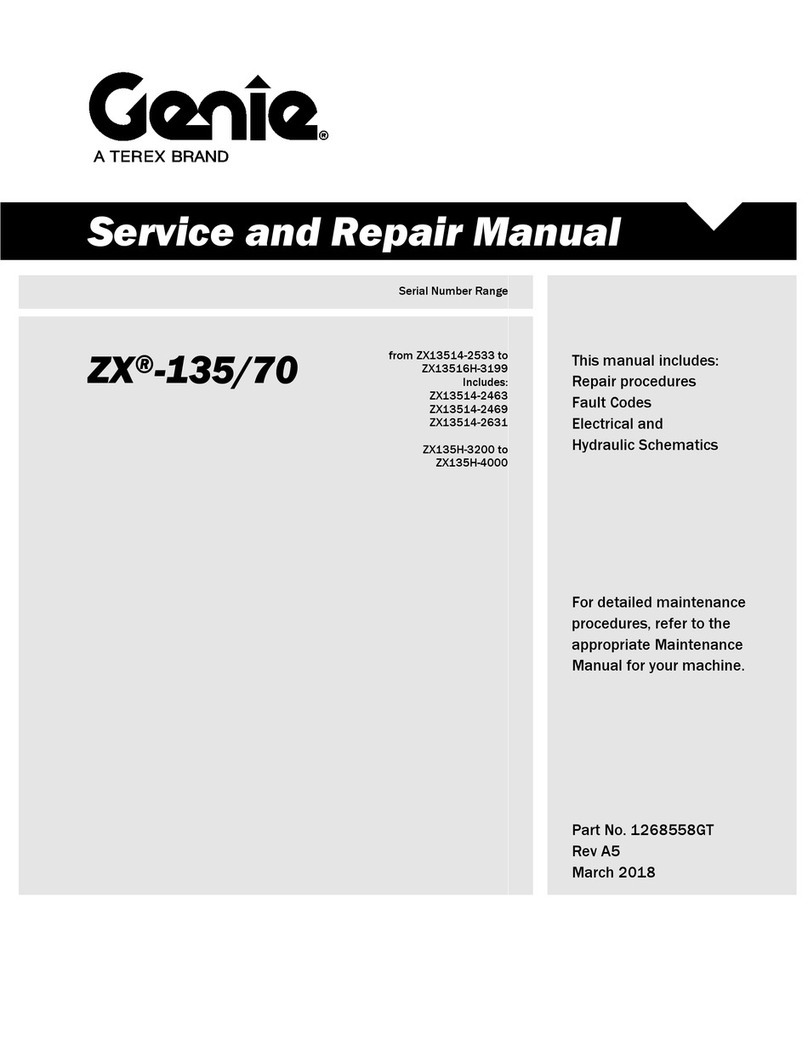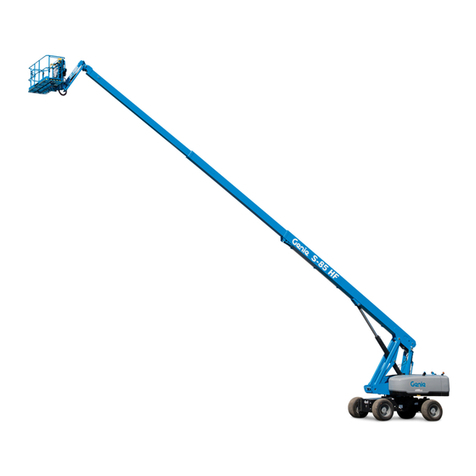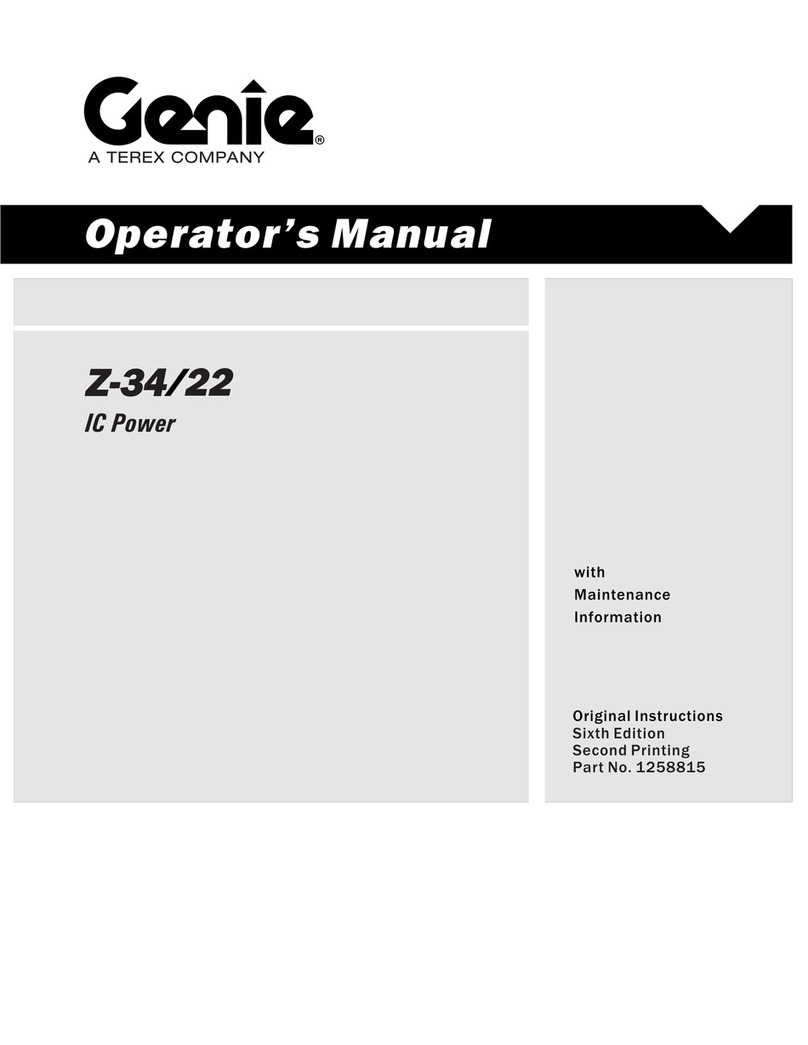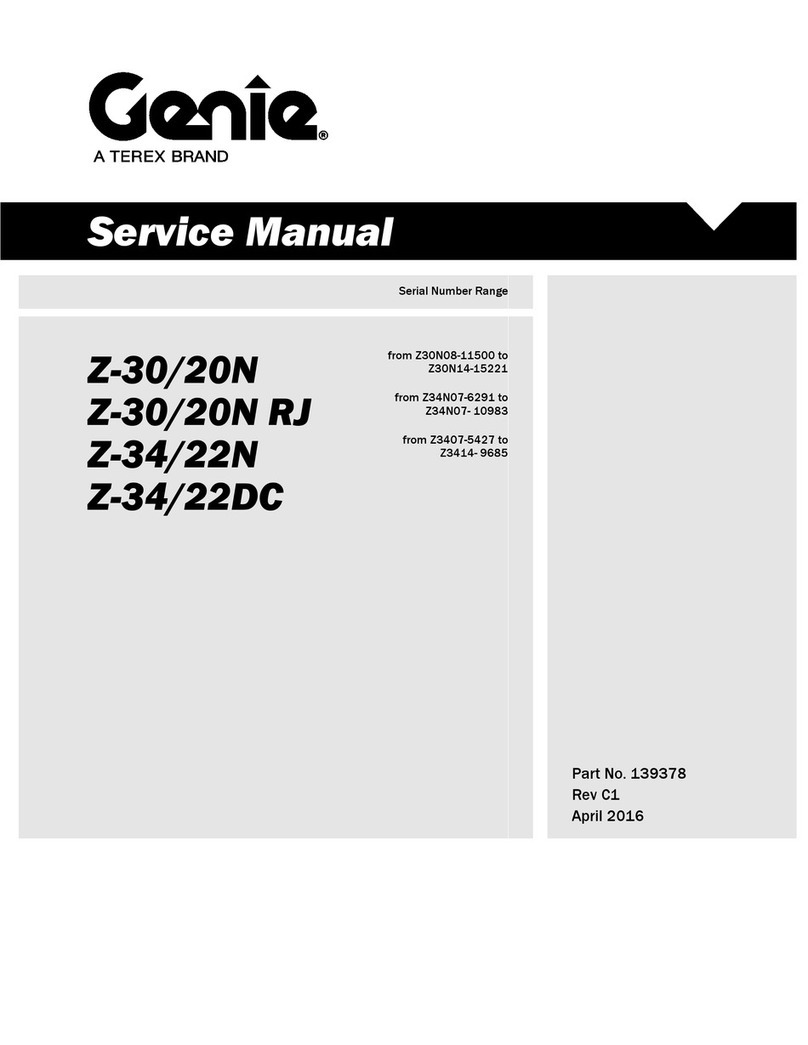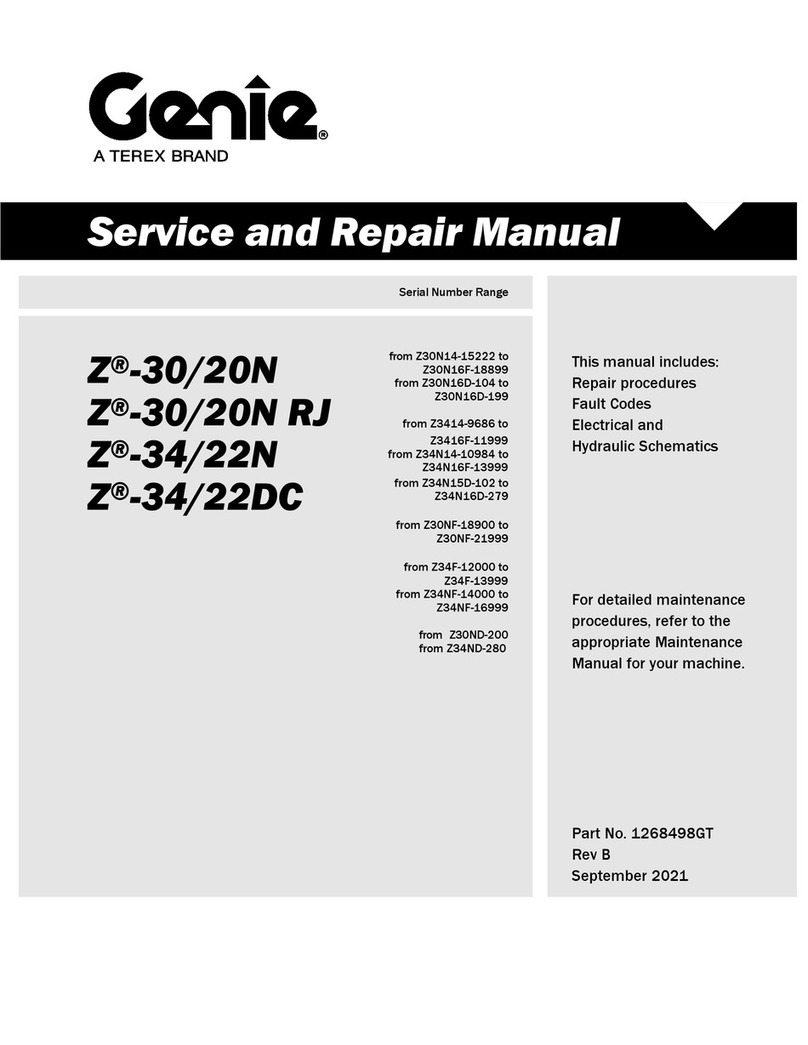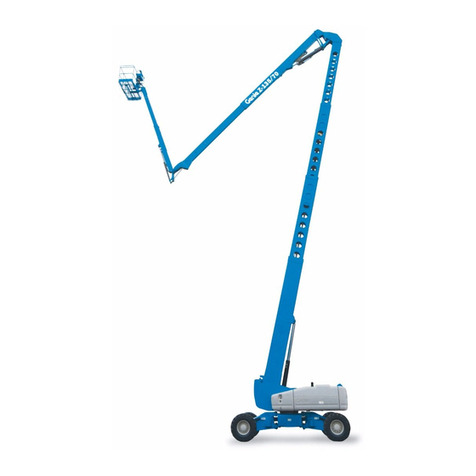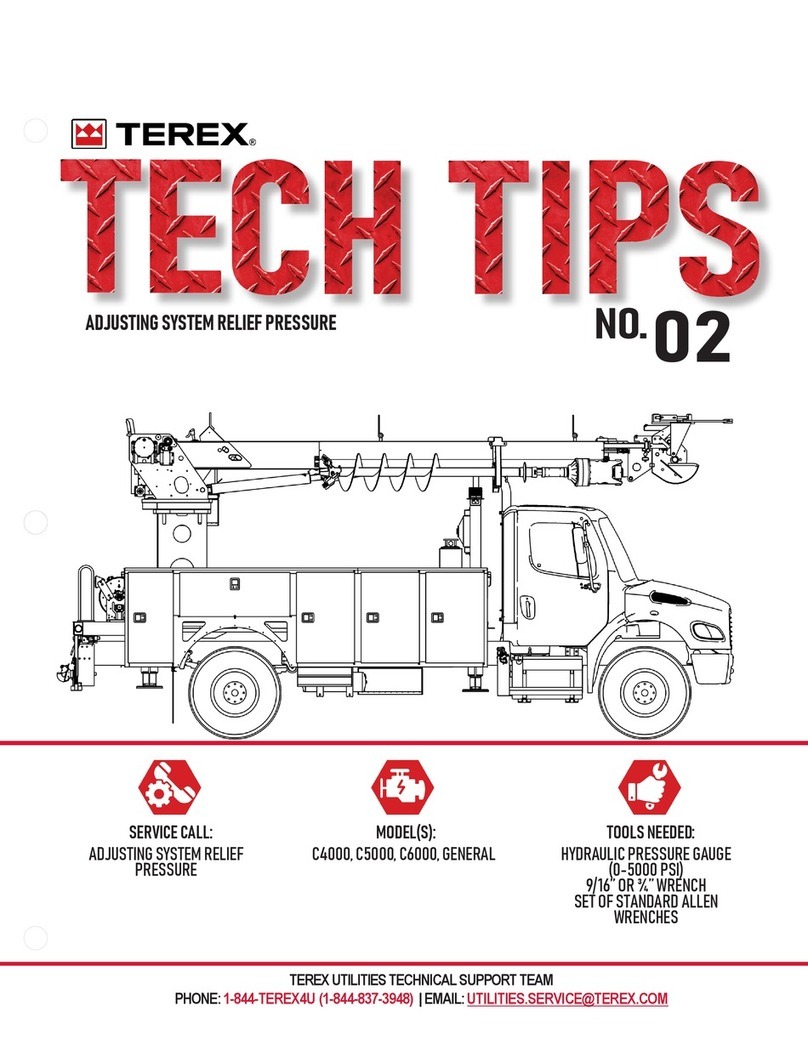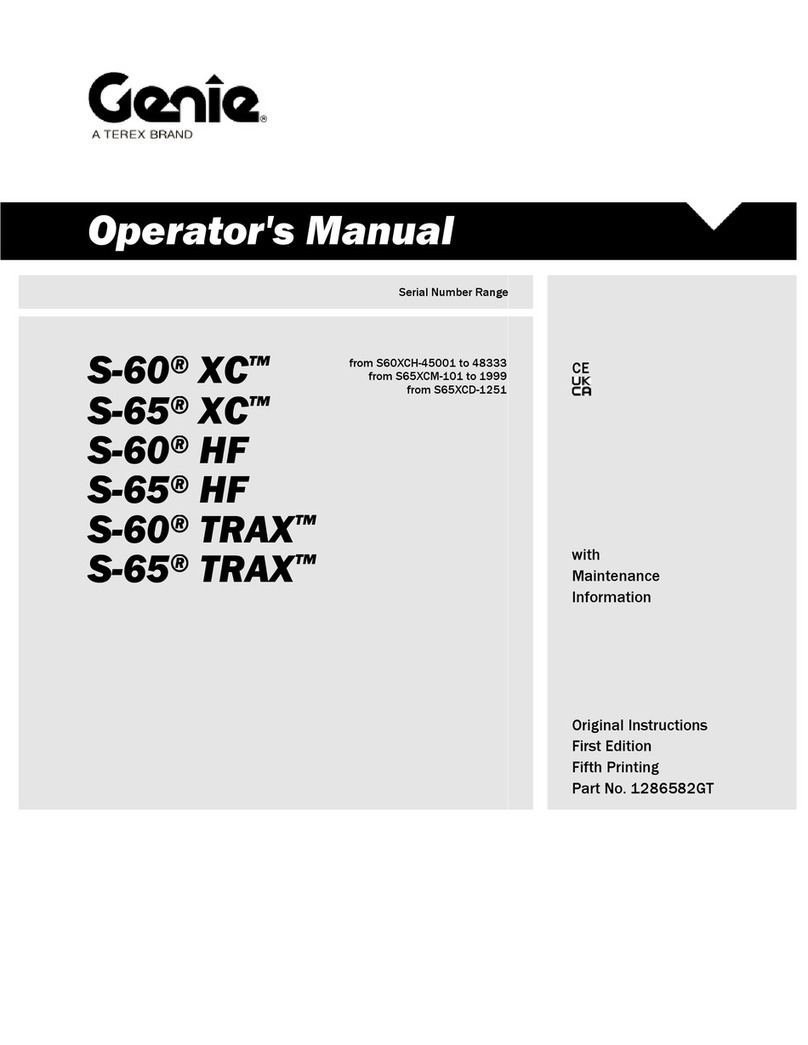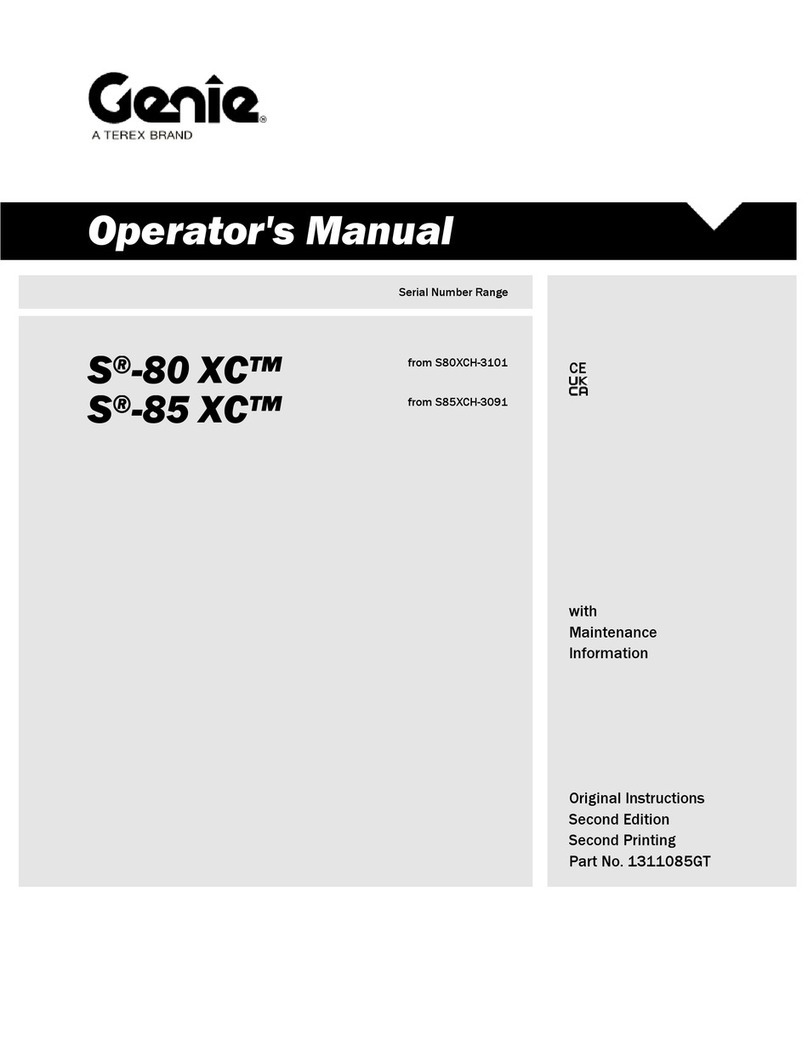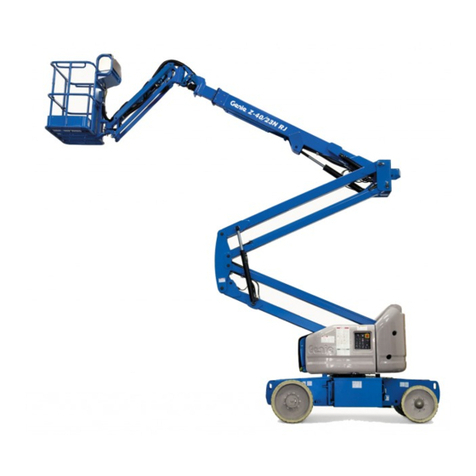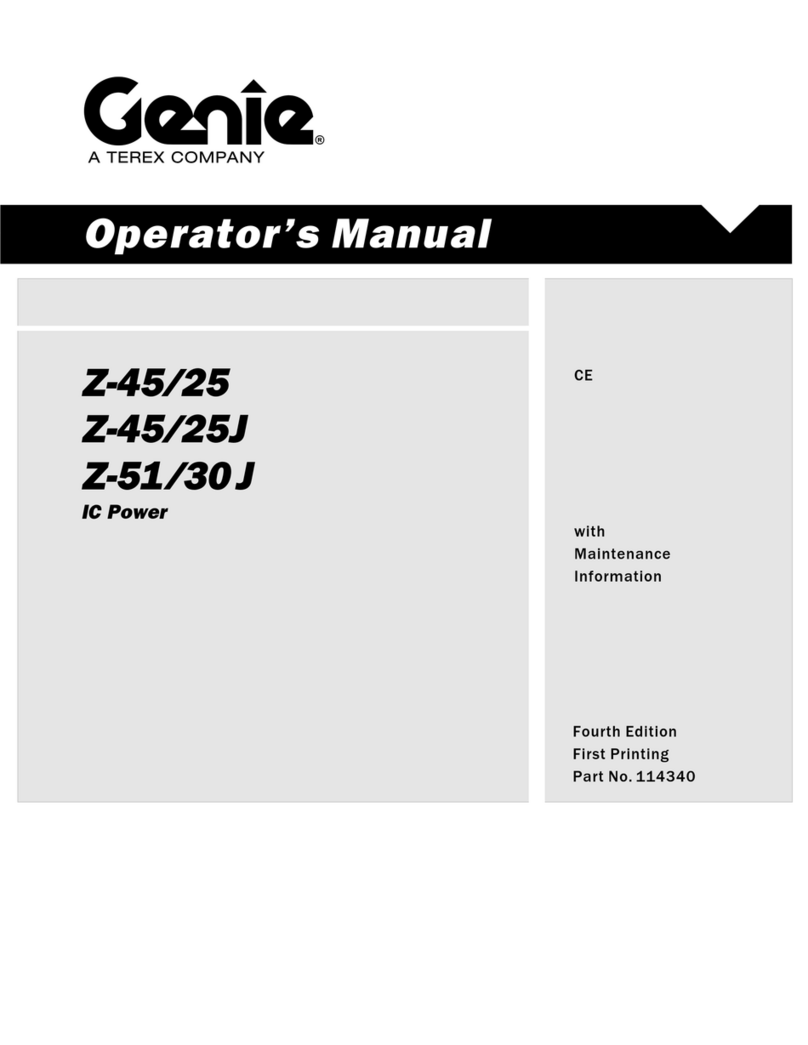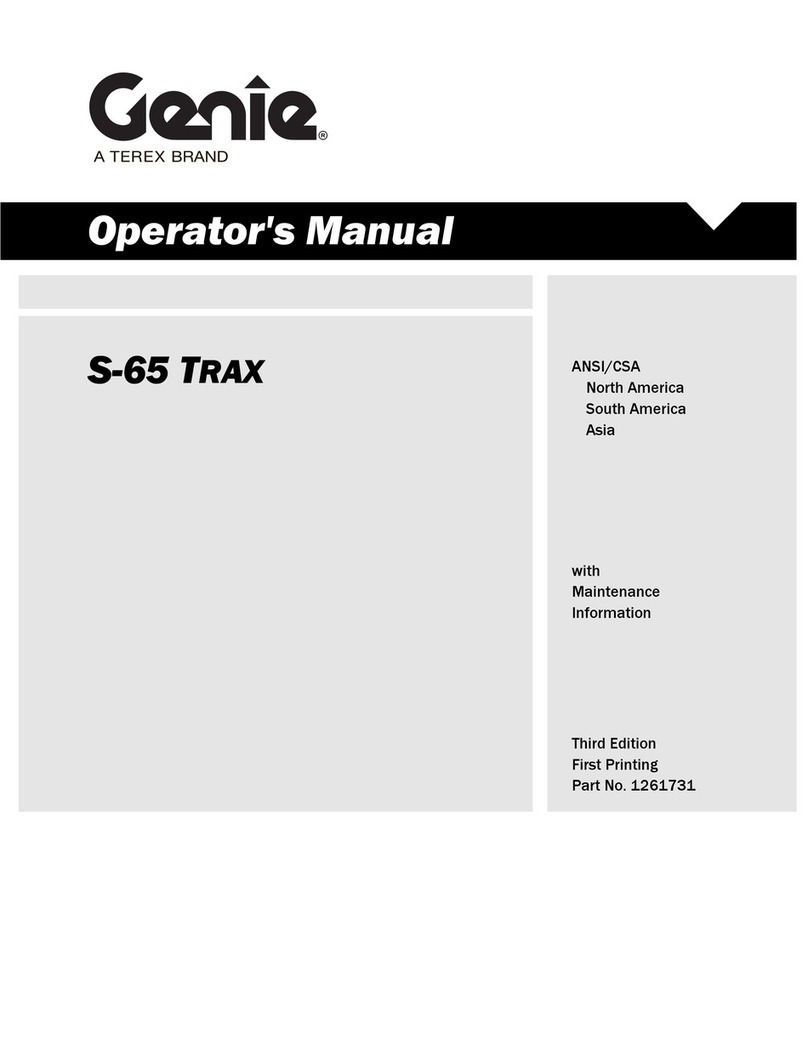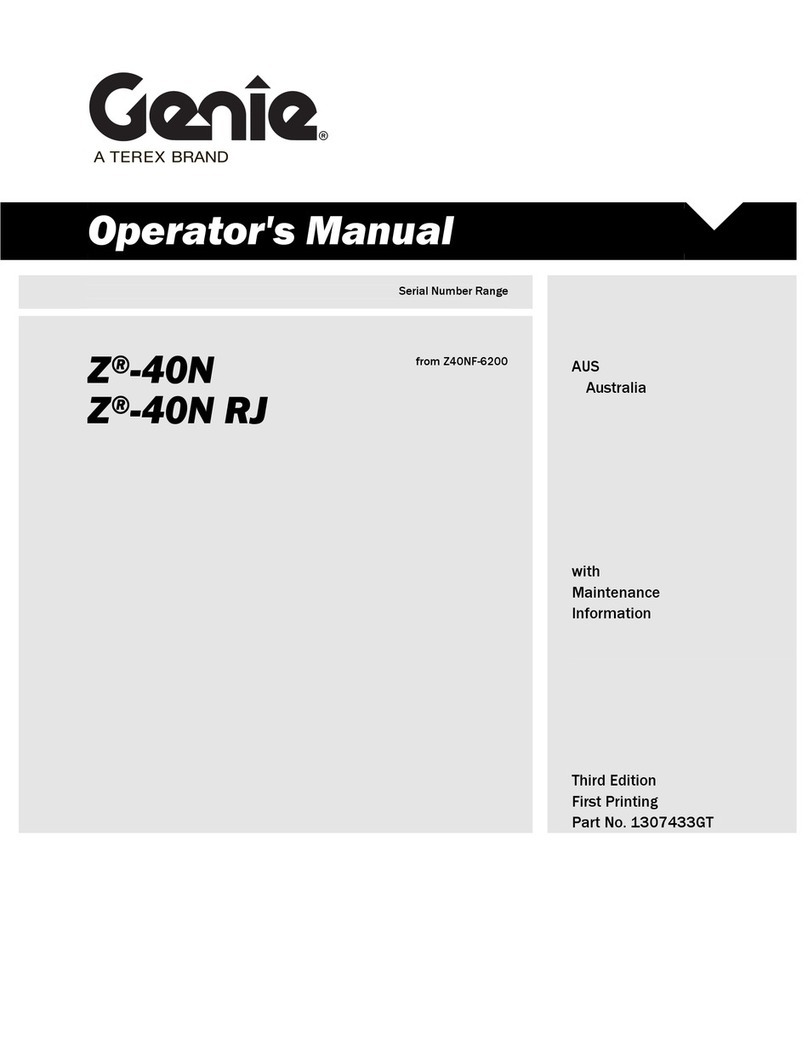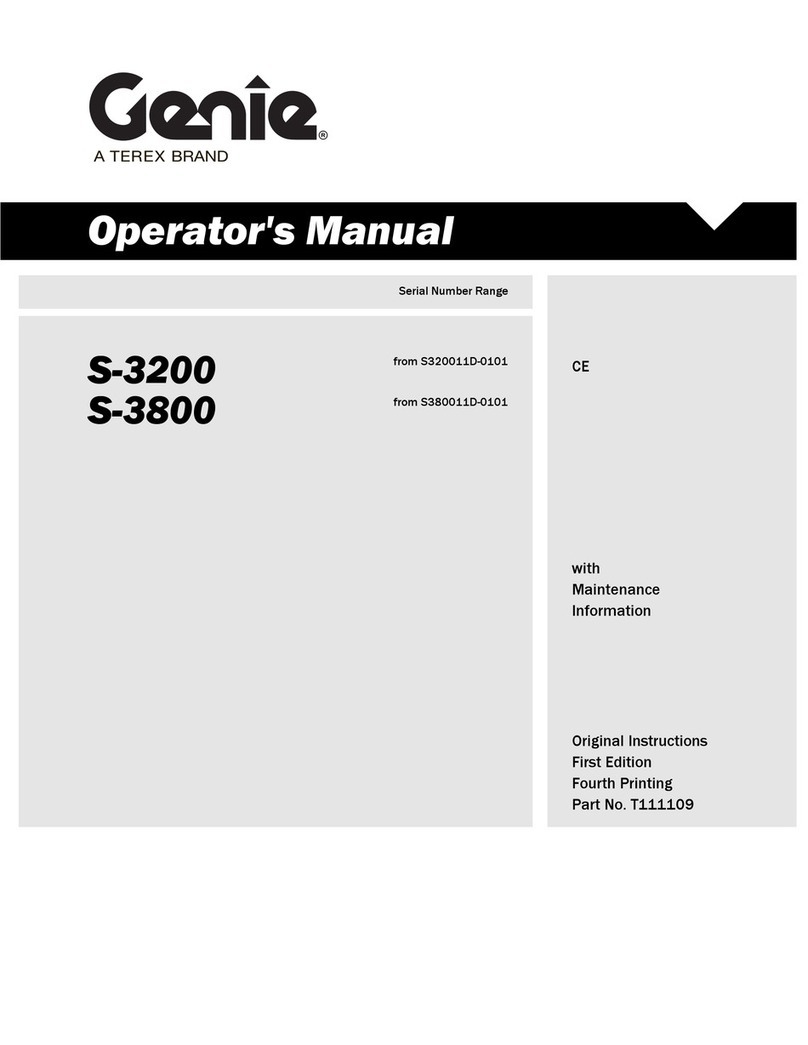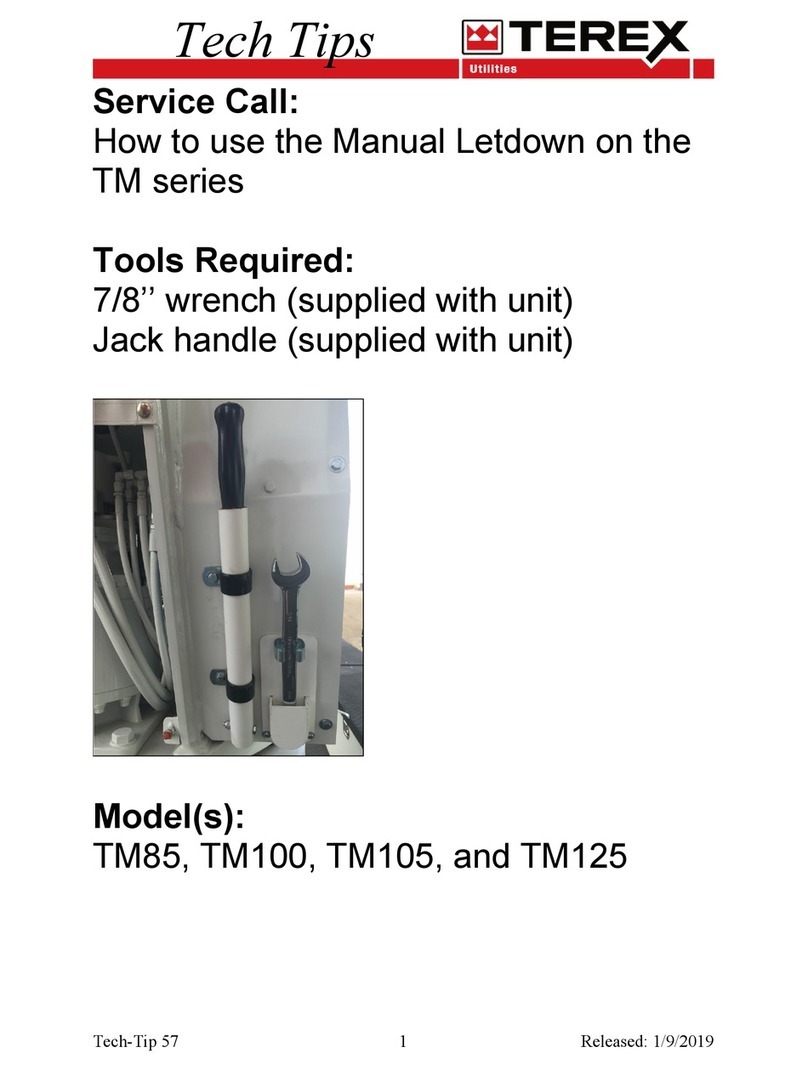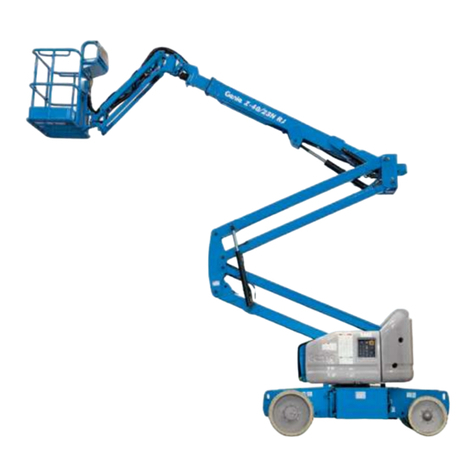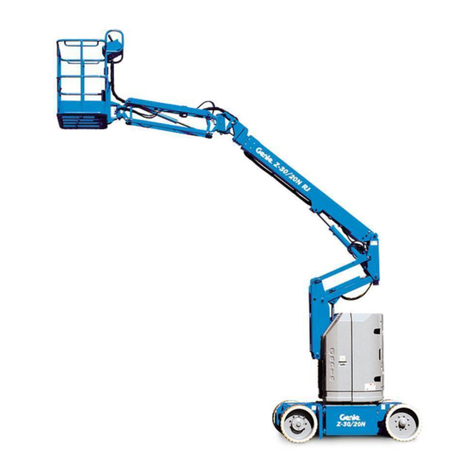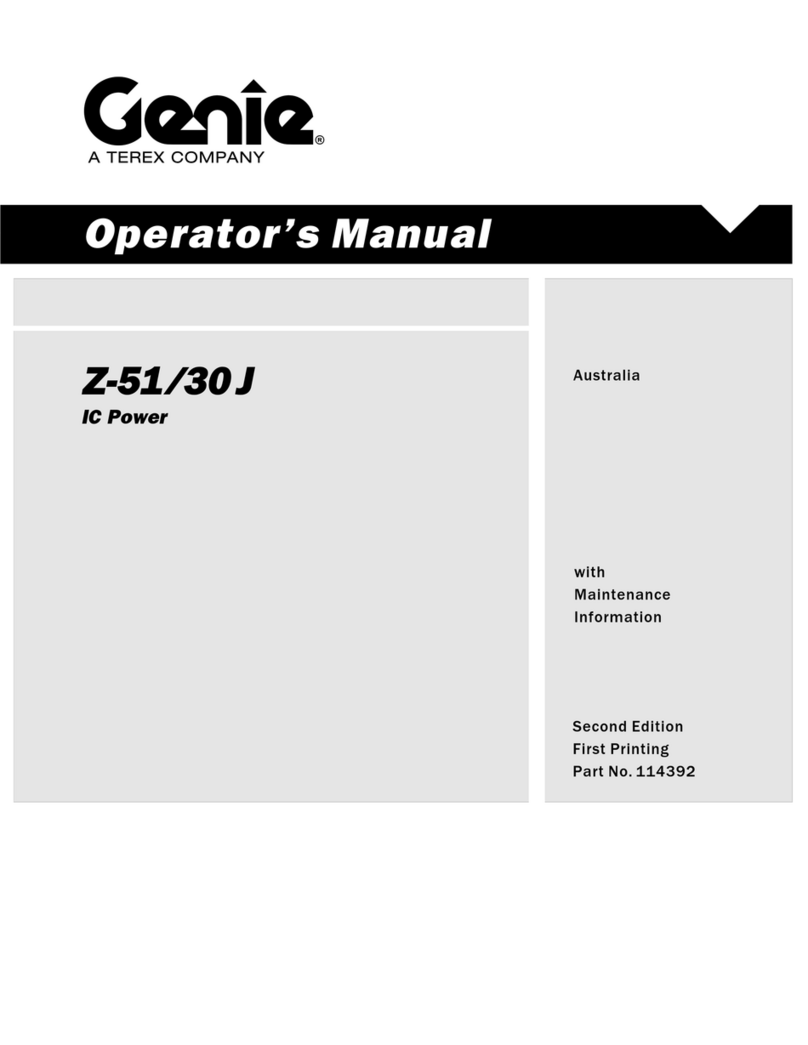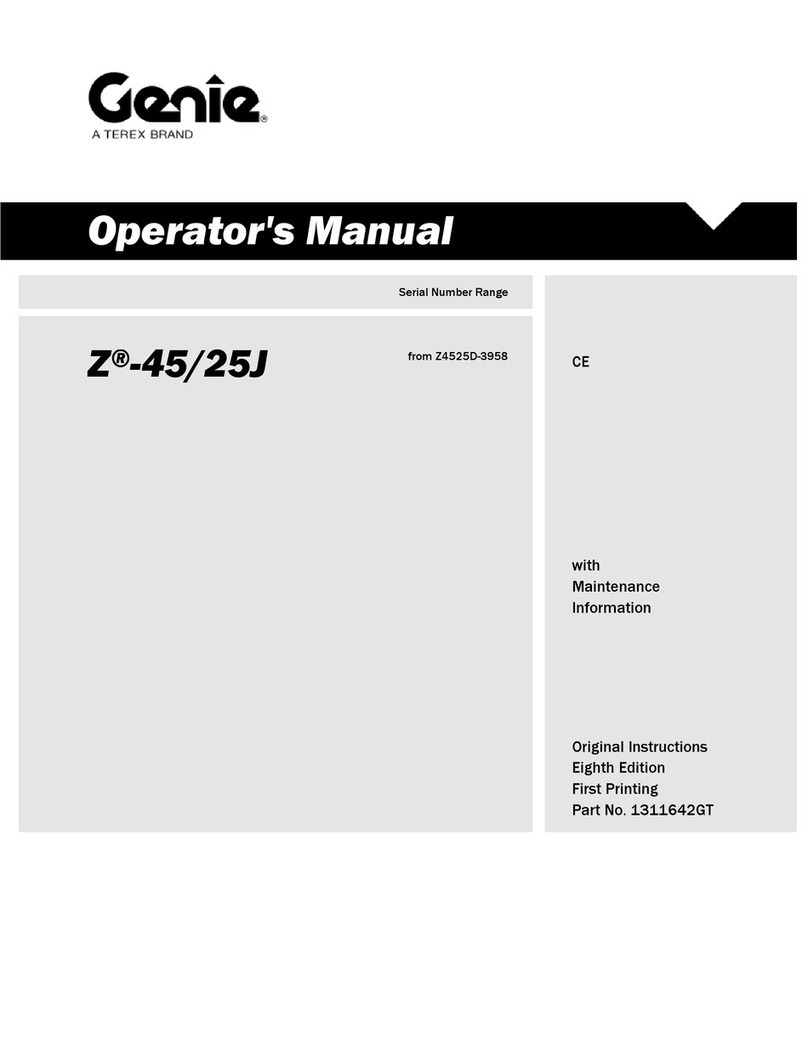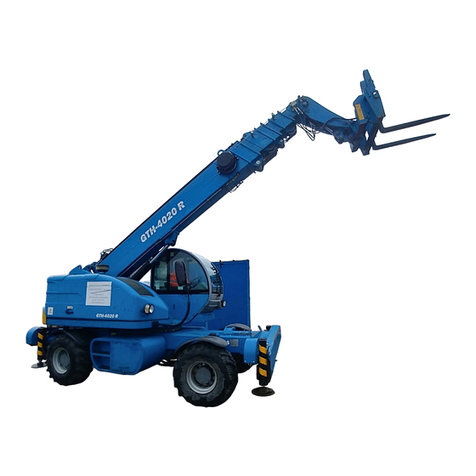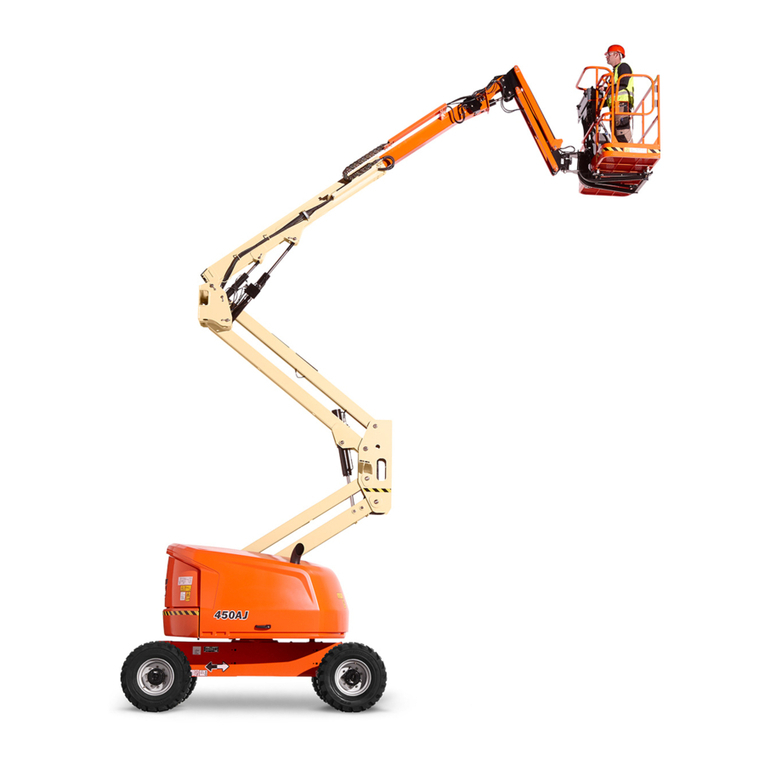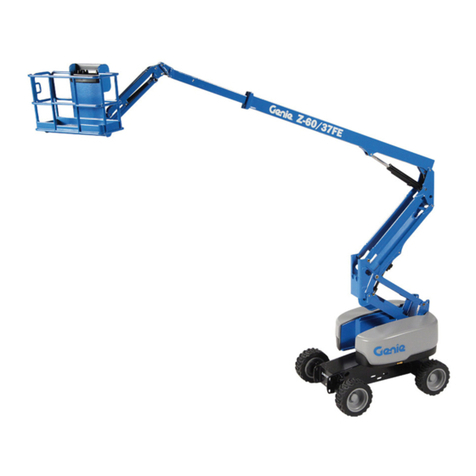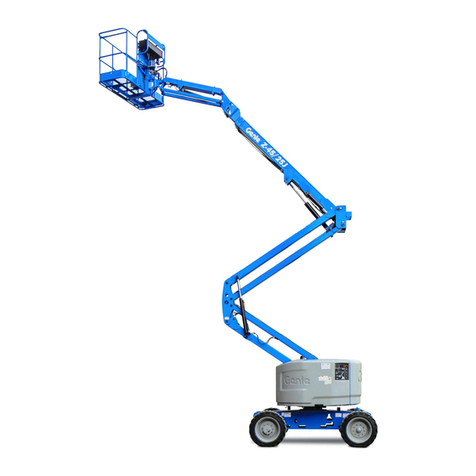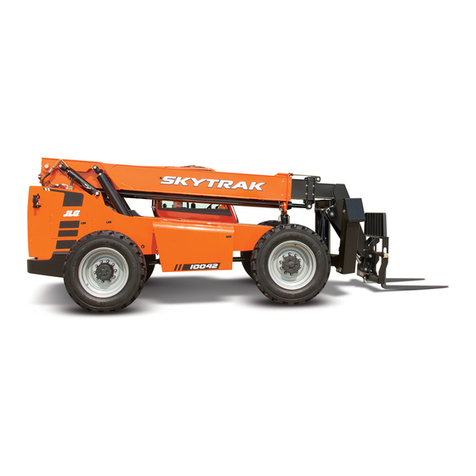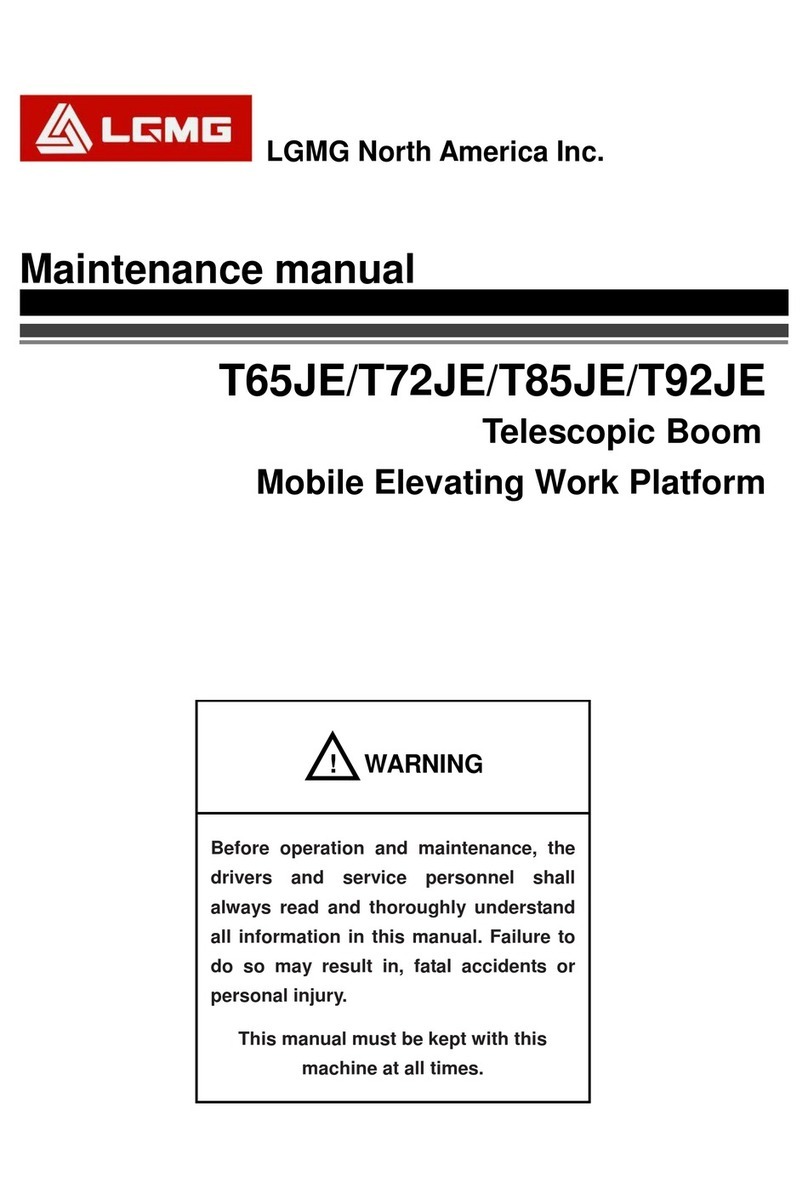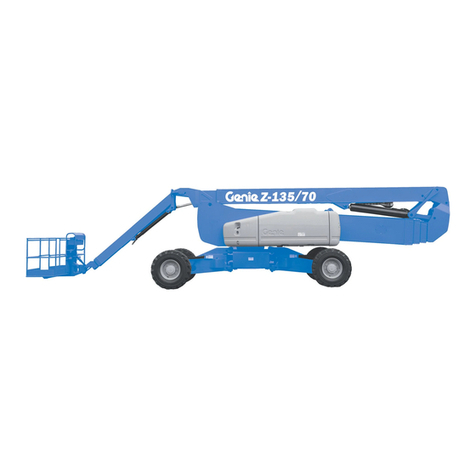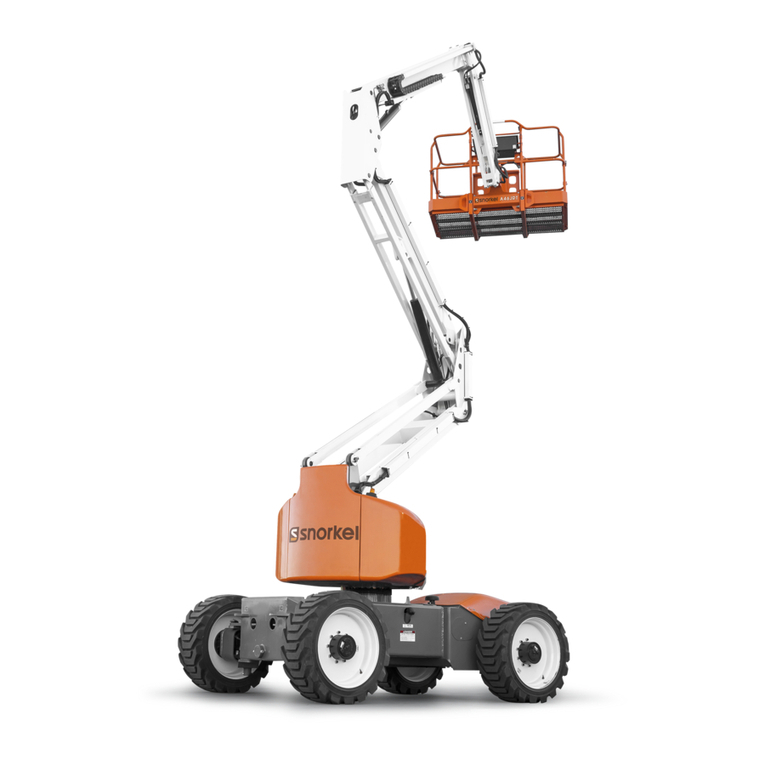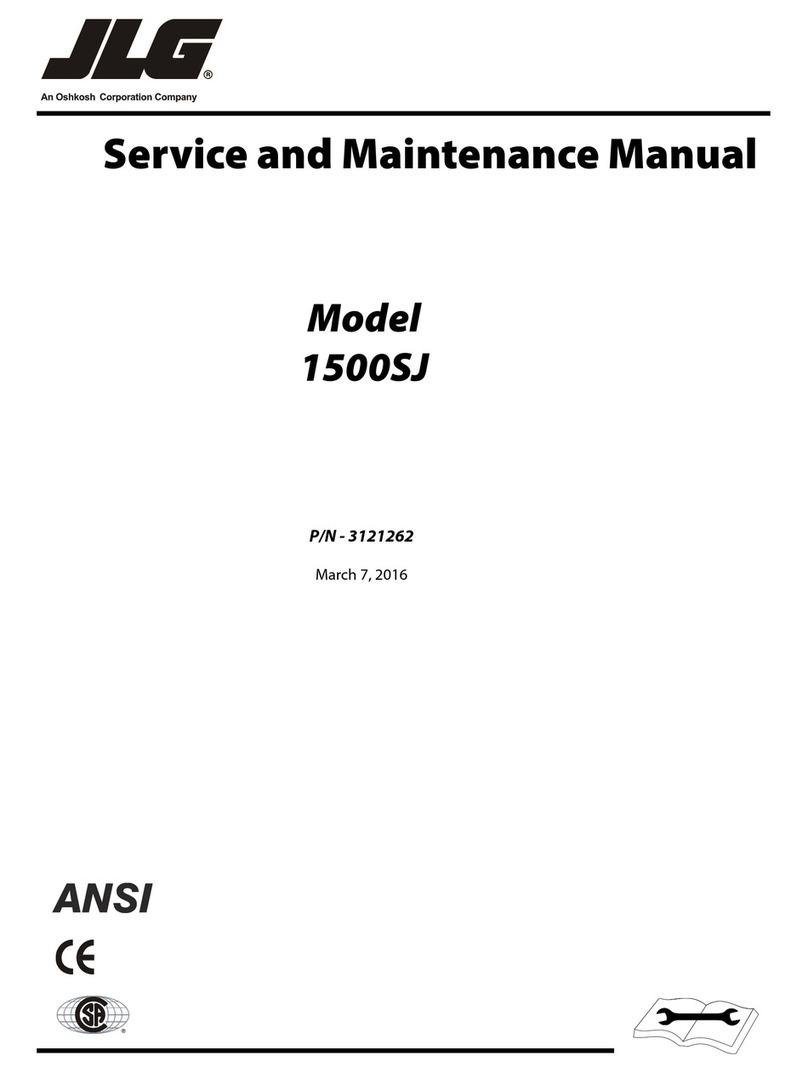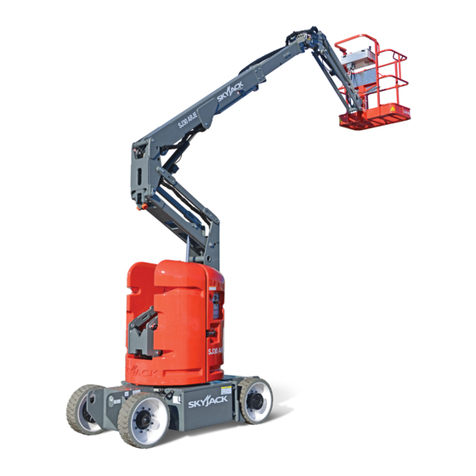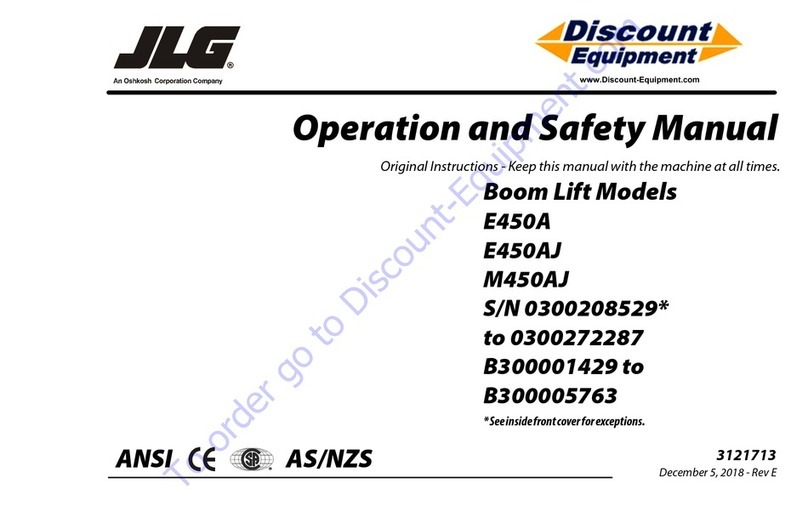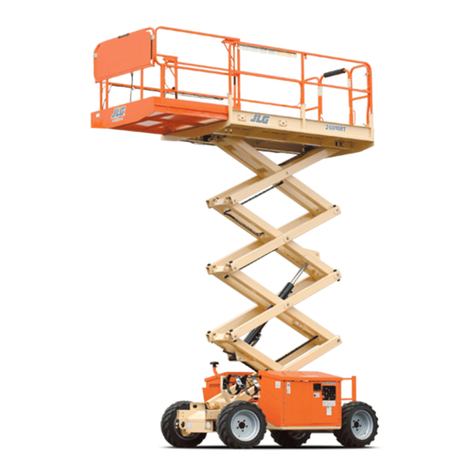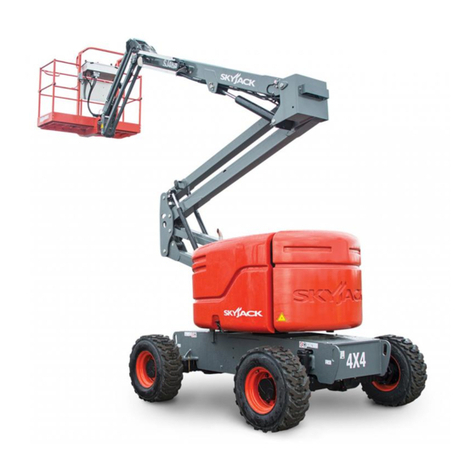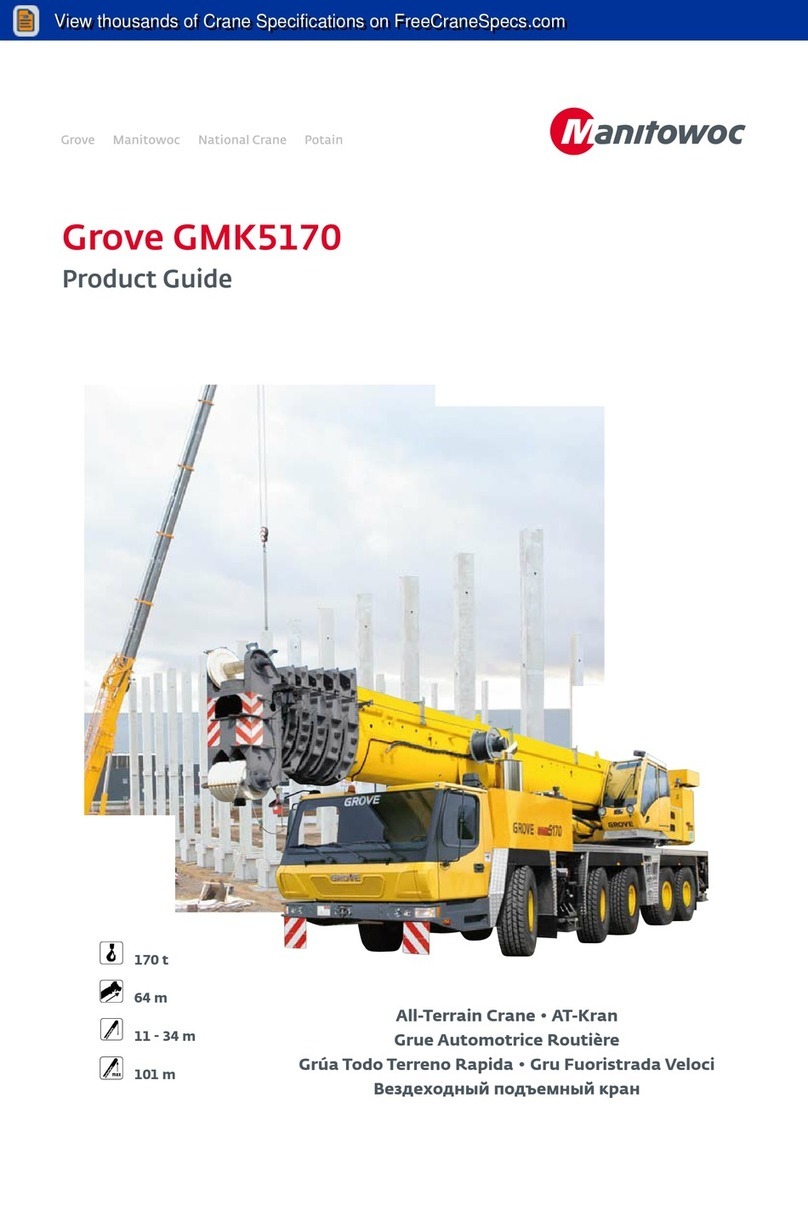
Document 57.4403.3200 - 1st Edition 06/2007 INDEX
GTH 55-19
INTRODUCTION
ii
DESCRIPTION OF THE MACHINE OPERATION
The mechanical energy source of this machine is a Perkins
diesel engine (1), model 804C-33 Tier 2, which supplies
47.1 kW at 2600 rev/min (63 HP) with a max torque of
198 Nm (146 lb-ft) at 1600 rev/min.
On the ywheel side of the engine, and connected to the
same by a Technodrive coupler complete with elastic joint
and with a 1-to-1 ratio, there is Bosch-Rexroth closed-
loop pump for hydrostatic drives, model A4VG56 (2) with
adjustment valve of DAtype.The max displacement of this
swashplate pump is 56 cm3/rev. and the max calibration
pressure is 430 bar (6235 psi). This pump is used to
supply hydraulic power under form of pressure and ow
rate which is then used for moving the machine. On the
through-shaft of such drive pump there is a Casappa
open-loop gear pump (with xed displacement) (3) with
priority valve integrated in the housing. The displacement
of this pump is 27 cm3/rev. Its function is to provide
hydraulic power, under form of pressure and ow rate, to
the steering circuit of the machine (primary branch of the
priority valve) and to the circuit for the telescopic boom
movements (secondary branch of the priority valve).The
assembly of the two pumps involves they have a rotation
velocity equal to the speed of the diesel engine.
The suction line of the open-loop pump (3) is protected
by an immersed lter (8), placed inside the hydraulic uid
tank (10) whose capacity is 75 litres (20 gallons). Just
upstream of the connection with the suction line, there
is a gate valve with ball valve (9) which lets you cut out
the hydraulic oil tank in order to perform maintenance
interventions on the machine's hydraulic system without
having to drain oil off the tank built in the same circuit. The
lter (34), placed in the line returning to pump (3), puries
most oil coming from the hydraulic circuit operating the
telescopic boom before this oil returns to the tank. In
addition to purify the oil coming from the main open-loop
circuit of the machine (telescopic boom operating circuit),
this lter can deliver oil at a minimum pressure of 0.5 bar
to the suction line of the drive pump (2).This construction
feature of the lter guarantees important advantages in
terms of absence of cavitation in the transmission suction
line, especially when the machine is started from cold.
The one-way valve (11) set at 2.5 bar (36 psi) protects the
pump housing against high pressures and guarantees a
certain circulation of the drain oil to the hydrostatic motor
reducing, in this way, the temperature. From port “G” of
the drive pump (2) low-pressure oil is taken (25-30 bar)
to feed the anti-cavitation circuit of the automatic fork
levelling system, the pilot circuit of the main valve of
the telescopic boom (16) and the parking brake unlock
circuit. The hydraulic energy produced by the drive pump
(2) is converted into mechanical power by a closed-loop
hydrostatic motor, model Bosch-Rexroth A6VM107 (5)
equipped with adjustment valve of DA1 type and with
ush valve (36) for reducing the max temperatures inside
